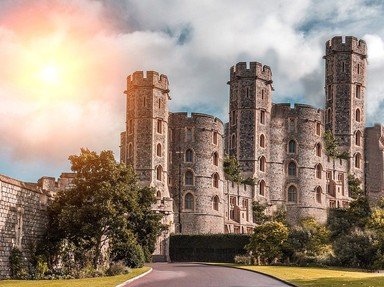Quiz Answer Key and Fun Facts
1. First built around Comyn's Tower in 1269, this castle was the last in Britain to be besieged. It is also the home site of the only legal private army in Europe.
2. If we wished to keep watch for the fabled Loch Ness Monster, we would have an unparalleled view of the Loch from the ruins of this once magnificent castle.
3. This castle's natural strength and island position made it an excellent place to store valuables such as the Royal Exchequer in 1329, and keep prisoners, such as Mary, Queen of Scots, in 1567/68.
4. Blackness Castle, a stronghold built in the 1440s, and situated on the south shore of the Firth of Forth, has seen service as which of the following?
5. The plot to murder Lord Darnley, the dissolute husband of Mary, Queen of Scots, was hatched in which Scottish castle?
6. Which castle had its top floor apartment gifted to General Dwight D. Eisenhower in 1945 in recognition of his achievements as Supreme Commander of the Allied Forces in Europe during World War Two?
7. A king at seventeen months and a queen at six days were both born in which of the following great houses?
8. Glamis Castle in Angus, holds the distinction of being one of Scotland's most haunted buildings. It is the home of which family?
9. Stirling Castle holds the distinction of being the home of the Scottish National War Memorial.
10. In 1707, James Douglas, Earl of Drumlanrig, spit-roasted and ate a servant boy in this house, which is now part of the Scottish Parliament.
Source: Author
JaneofGaunt
This quiz was reviewed by FunTrivia editor
Bruyere before going online.
Any errors found in FunTrivia content are routinely corrected through our feedback system.
